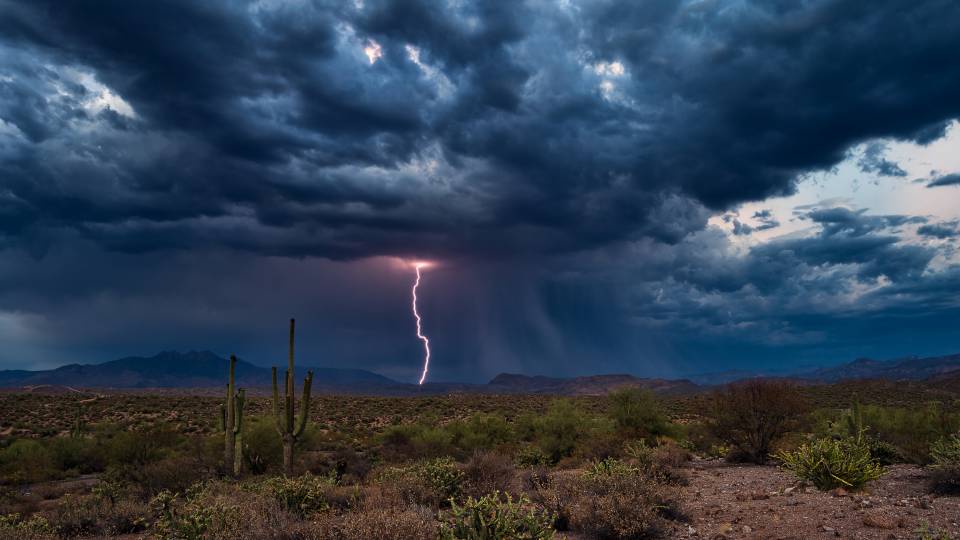In the American West, the anticipated water supply from snowpack — the high-elevation reservoir of snow that melts in the spring and summer — determines what, when and where farmers plant, and it helps urban water managers plan for the coming year's water needs.

A NOAA Corps aviator captured this image of alpine snowfields during a snow survey flight over Alaska.
New research suggests that the West's cities and farms may no longer need to wait all winter to learn how much water they can expect to have — or not have. Researchers from the National Oceanic and Atmospheric Administration (NOAA) and Princeton University report that annual snowmelt can be predicted to the scale of a mountain range as early as March — some eight months before winter begins. The paper was published online Jan. 22 by the Proceedings of the National Academy of Sciences.
The research has the potential to improve water-related decisions for numerous sectors, including agriculture, tourism and fire-control. Western farmers depend on snowpack for a majority of their water. Meltwater also contributes to municipal water supplies; feeds the rivers and streams that support fisheries and tourism; and conditions the landscape, helping lessen the effects of drought and wildfires.
"In summer, when people are thinking about Fourth of July fireworks and barbecues, our experimental prediction system tells us what the following March will be like long before the first snow has fallen," said first author Sarah Kapnick of Princeton's Class of 2004, a physical scientist at NOAA's Geophysical Fluid Dynamics Laboratory (GFDL), which is located on Princeton's Forrestal Campus. "Advances in global climate models and high-quality ocean, atmospheric and land observations are helping us push the frontiers of snowpack prediction."
Kapnick started the project in 2013 as a postdoctoral researcher at Princeton. Co-authors on the paper include Gabriel Vecchi, professor of geosciences and the Princeton Environmental Institute (PEI), and Elena Shevliakova, a senior climate modeler at GFDL and a visiting research scholar at PEI. Co-author P.C.D. "Chris" Milly, a senior scientist at the U.S. Geological Survey, graduated with Princeton's Class of 1978.
"At first it was going to be a study of climate variability and change, but as model data became available, it was clear we actually had prediction skill," Kapnick said.
Long-range climate predictions project a decline in snowpack density by the end of the century, but there has been little information on what to expect in the next two months to two years. While the researchers are not yet ready to deliver operational forecasts, their experimental predictions were accurate for much of the West —except in the mountains of the southern Sierra Nevada, where the infrequent and chaotic nature of precipitation-producing storms have long been a challenge.
"Having seasonal snow forecasts would be a tremendous boon to water managers," said Frank Gehrke, chief of the California Cooperative Snow Survey Program in the state's Department of Water Resources, who is familiar with the research but had no role in it. "I'm not surprised predictions are running into difficulty in the Sierra Nevada, but I'm hopeful the work we're doing now to improve data from this terrain will help improve prediction here."
While better prediction of water resources has always been a priority in the West, the 2012-15 drought and the devastating 2017 wildfires have raised the stakes. The Weather Research and Forecasting Innovation Act of 2017 passed by Congress and signed by President Donald Trump also identifies improved snowpack prediction as a national priority.
Morgan Kelly of the Princeton Environmental Institute and Monica Allen of the National Oceanic and Atmospheric Administration contributed to this story.


